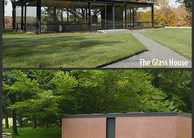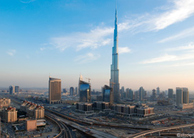Opinion:MIT's Stata Center: The Static Soul of a Dynamic Body
By
2014, Vol. 6 No. 10 | pg. 2/2 | « MIT wanted a building that would maximize the available space, but Gehry’s proposed building was set well back from neighboring Vassar Street and helped open the MIT campus to the city. Despite its offbeat appearance, the Stata Center did have its share of people who admired it from the get-go. After four years of construction work, when the building finally opened in 2004, Pulitzer Prize-winning architecture critic Robert Campbell wrote in The Boston Globe newspaper that it was “a work of architecture that embodies serious thinking about how people live and work, and at the same time shouts the joy of invention.”8 But for all those who admired the building, there were an equal number of people who disliked it. Local newspapers’ reactions to the building were sometimes unsympathetic. The harshest criticism came from John Silber, an honorary member of the American Institute of Architects and the former president of Boston University. In Architecture of the Absurd: How "Genius" Disfigured a Practical Art (which actually features the Stata Center on the cover), he wrote that absurdism in buildings represents a blatant disregard for the needs of the building, whether it be a student center, music hall, or corporate headquarters.9 More recently, Silber was quoted in The Boston Globe saying that Gehry thinks of himself as a sculptor, but one does not live in a sculpture.10 Those who disparage the building must have felt justified when Gehry’s design started to seem ill-suited for the New England climate. Stata has recently been plagued by leaks, cracked masonry, mold, and drainage back up— problems that have required costly repairs. Moreover, due to the unusual geometry of forms, it is almost impossible to prevent cross winds from exacerbating these problems. In fact, according to one MIT maintenance worker, the costs of repair and maintenance are so high that the Stata may eventually have to be torn down. In October 2007, MIT filed a negligence suit against both Frank O. Gehry and Associates and the construction company, New Jersey-based Beacon Skanska Construction Company (now known as Skanska USA Building Inc.) claiming there were flaws in the design and construction of the $300-million building.But it’s not just structural flaws that open the Stata Center to criticism. Although regarded by Gehry as democratic, reflecting “pluralism and collision of ideas,” Stata precludes expansion and possibilities for change. But it’s not just structural flaws that open the Stata Center to criticism. Although regarded by Gehry as democratic, reflecting “pluralism and collision of ideas,”11 Stata precludes expansion and possibilities for change, unlike Bosworth’s original plan, which has received countless updates, renovations and additions. The New Tech design has allowed for an organic expansion of the school’s departments and facilities; beneath its “unchanging skin,” the vast interior has accommodated numerous changes in space, function, and interior layout.12 Such developments are in sharp contrast with Gehry’s approach, in which a particular vision limits the possibilities for further development. The premise of Bosworth’s MIT was to make a campus that not only embodied a distinctive identity for an emerging university, but also fit well in its setting. In fact, MIT was the first building in the area that could “rightly claim to be part of the Charles River landscape.”13 In a 1947 issue of Architectural Forum, Joseph Hudnut, a former professor of architecture at MIT and the founder of the Graduate School of Design at Harvard, said campus design should be a “growing organism whose form lies partly in the past, partly in the future.”14 Bosworth’s design has certainly met this criterion and has stood the test of time, becoming a “timeless” structure. The Stata Center, by contrast, will always remain of its time, a reminder of one man’s vision. However brilliant or absurd it’s design may ultimately prove, there’s much that is “static” in the Stata’s visually dynamic image. Endnotes1.) Mark Jarzombek. Designing MIT: Bosworth’s New Tech (Boston, Northeastern University Press, 2004), viii. [2] Ibid. [3] Prior to this time, MIT which was founded in 1865, was composed of a series of buildings designed by the Bostonian architect William G. Peterson, facing Boylston Street in the Back Bay area of Boston. The campus was relocated on the other side of the Charles River (in Cambridge) to provide ample room for growth and development. See further Jarzombek, ibid., 4-16. [4] See further William J. Mitchell, Imagining MIT: Designing a Campus for the Twenty First Century (Cambridge: The MIT Press, 2007). Aalto’s contribution is the undergraduate dorm, Baker House (completed in 1949). [5] “MIT Sues Architect Gehry Over Unusual Building,” [article online]; available from http://www.npr.org/ blogs/news/2007/11/mit_sues_architect_gehry_over.html; Internet; accessed 6 January 2008. [6] Gehry once said: “I was worried that when you see shapes like this, you might think it looks like something from a cartoon. Some of the early models scared me and some others who saw them; I agonized a lot about that. Then a collegue said to me that the building is ‘Leger-like,’ which is a great compliment. I love Leger, so that gave me confident and a clue.” See Nancy Joyce et al. Building Stata: The Design and Construction of Frank O. Gehry’s Stata Center at MIT (Cambridge, MIT Press, 2004), xi. “Leger-like” refers to the works of the twentieth-century French Painter, Fernand Leger. Gehry’s ideas are often stimulated by works of art. He mentions Giorgio Morandi’s paintings of bottles as sources of inspiration for the initial concepts that led to the design of the Stata Center. Other descriptive adjectives come from interviews with average people living in Cambridge. [7] Saarinen himself referred to the building as such. See Pelkoneon, Eva Liisa, and Donald Albrecht, eds., Eero Saarinen: Shaping the Future (New Haven: Yale University Press, 2006). 8.) Quoted in “Why Shouldn’t Architecture de Fun? The Ray and Maria Stata Center for Computer, Information, and Intelligence Sciences,” [article online]; available from http://web.mit.edu/spotlight/stata2/; Internet; accessed 5 January 2008. [9]John Silber. Architecture of the Absurd: How "Genius" Disfigured a Practical Art (New York:Quantuck Lane Press, 2007). 10.) Quoted in “MIT Sues Architect Gehry Over Unusual Building,” ibid. 11.) Frank O. Gehry quoted in Joyce, ibid., xiii. 12.) Mitchell, ibid., 17. 13.) Jarzombek, ibid., viii. 14.) Joseph Hudnut, “On Form in Universities,” Architectural Forum (December 1947), 88-93. Quoted in Mitchell, ibid., 24. Suggested Reading from Inquiries Journal
Inquiries Journal provides undergraduate and graduate students around the world a platform for the wide dissemination of academic work over a range of core disciplines. Representing the work of students from hundreds of institutions around the globe, Inquiries Journal's large database of academic articles is completely free. Learn more | Blog | Submit Latest in Architecture |















